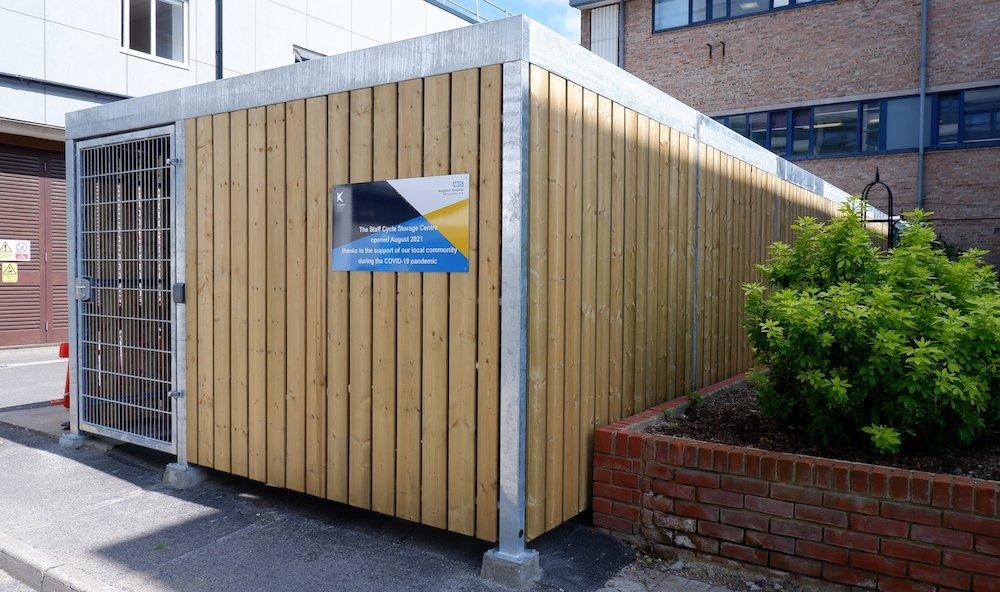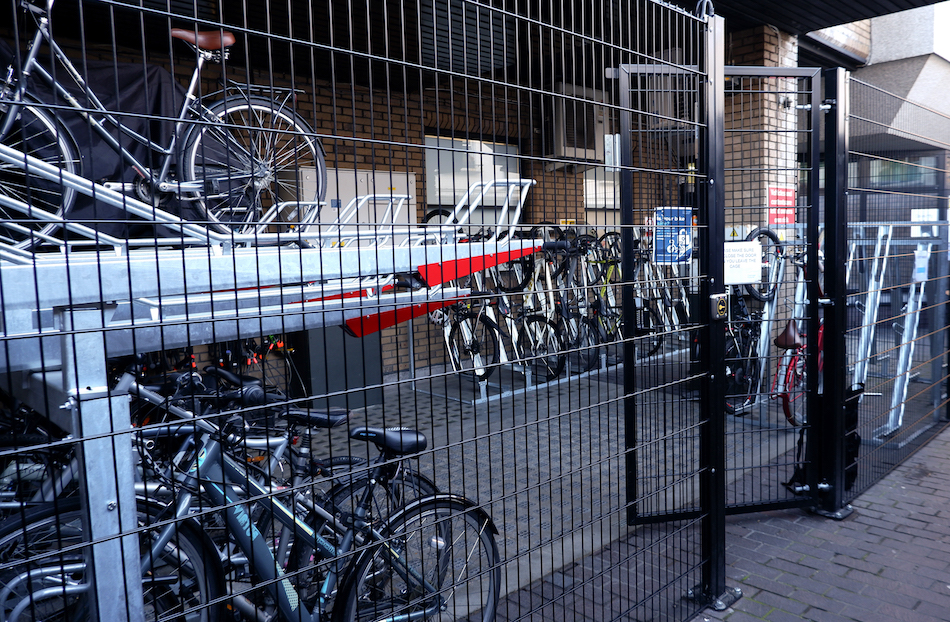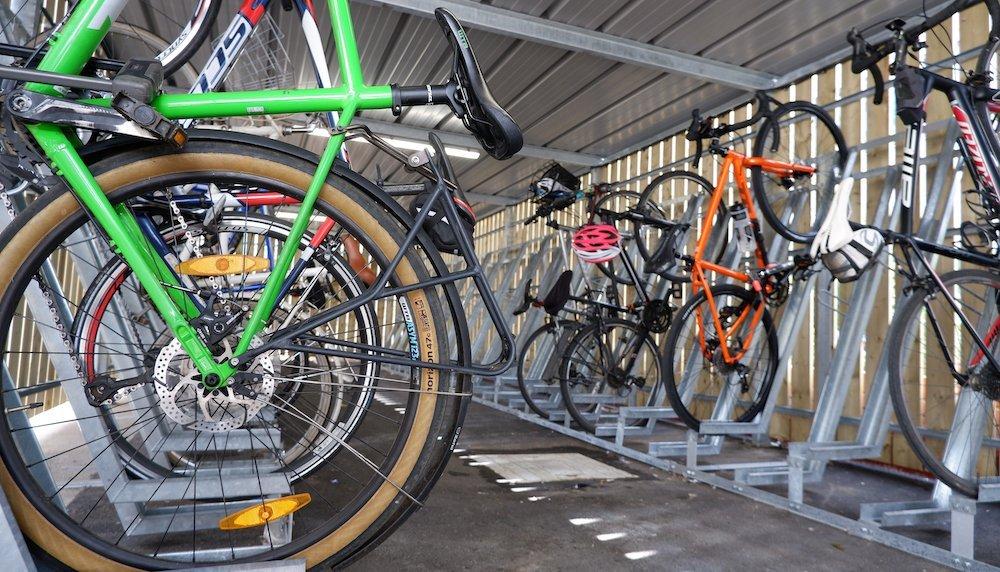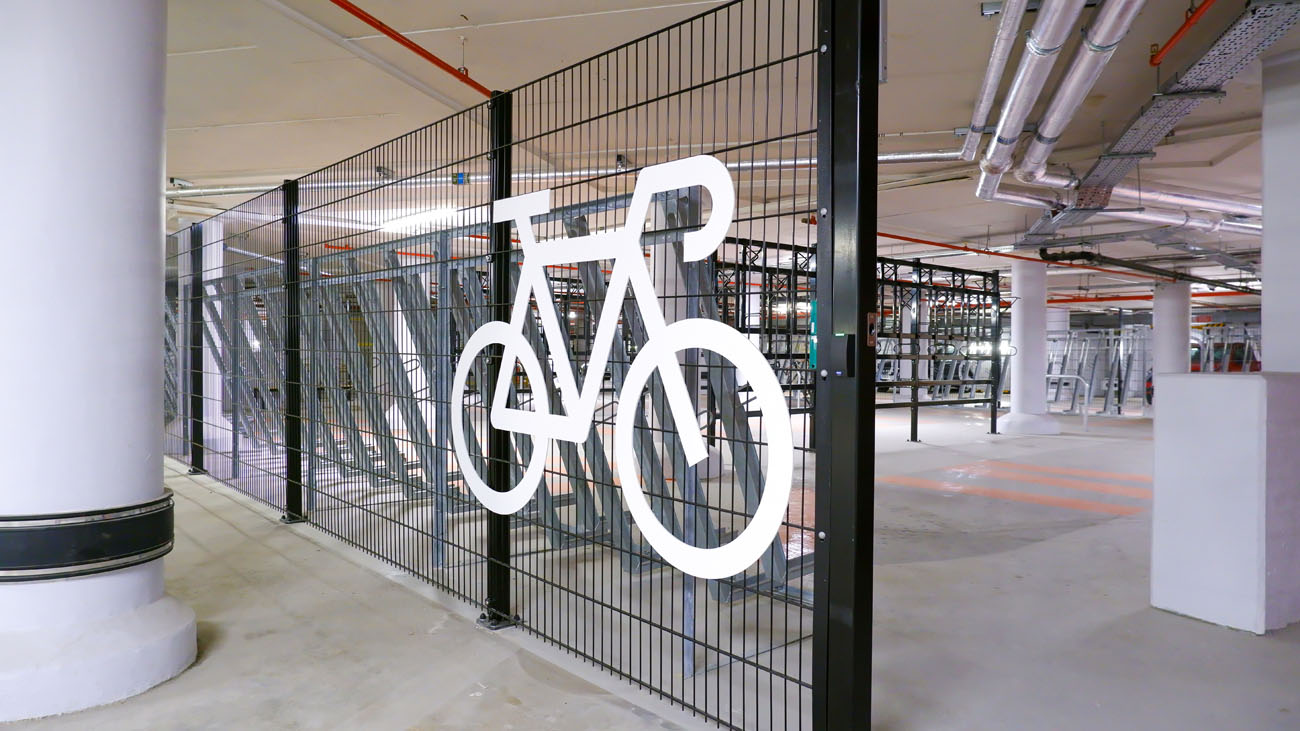We know how bicycle storage facilities can encourage can help businesses encourage their employees to cycle to work, but what about our hospitals?
Well, the benefits are the same – it is a workplace, after all. The problem for healthcare facilities and other public buildings, such as libraries and leisure centres, is separating visitor from staff parking and therefore creating safe and secure storage.
We saw this issue while working with both Kingston Hospital and Cromwell Hospital. Both are busy, high footfall places – as you’d expect with hospitals – and creating the right space for cycle parking can be tricky.
Here’s what we learnt from our work, and how these storage solutions could be rolled out to more hospitals in the UK & Ireland to help encourage more staff to cycle to work.
Secure staff access is vital
The importance of secure access for those cycling into work can’t be understated. Bike theft is a major factor preventing many from cycling, especially in bigger cities like London.
Last year the London Cycling Campaign (LCC) highlighted the inadequacy of some bike parking in central London following rising numbers of stolen cycles.
In 2020 the LCC said 800 NHS and other healthcare workers had signed up as campaign members, saying:
“We need more secure cycle parking at hospitals and other health and care premises, particularly in inner London. Everyone who works in the care sector should have a safe place to keep their cycle while at work, and there also must be ample storage for visitors, including people using larger cargo cycles and tricycles.”
This was a problem being faced at Cromwell Hospital, with instances of bike theft and growing number of near-misses. Johnny Cunha-Santos, facilities manager at Cromwell Hospital, said:
“We were having problems with visitors using what was supposed to be staff only storage, meaning that staff often couldn’t park their bicycles. This was frustrating for employees and ultimately caused delays to the running of the hospital.
“But above all, we had several close calls with bike thefts and unfortunately a couple of stolen bikes.”
Working with the Hospital, we designed and install secure caging and new bike racks to both maximise capacity and provide gated access for staff.
“The caging has stopped all cases of theft so far. It has also guaranteed we can keep the facility for staff using the gated keycard access,” said Johnny.
It’s a relatively simple solution that offers a far superior level of security. In turn, staff are more motivated to ride to work knowing that they’ll have peace of mind their bicycle is safe.
Similarly, at NHS Kingston Hospital, a 78 capacity timber cycle shelter was installed in the centre of the hospital complex. Again, staff access via their personal keycard meant the shelter could be locked for vastly increased security.







